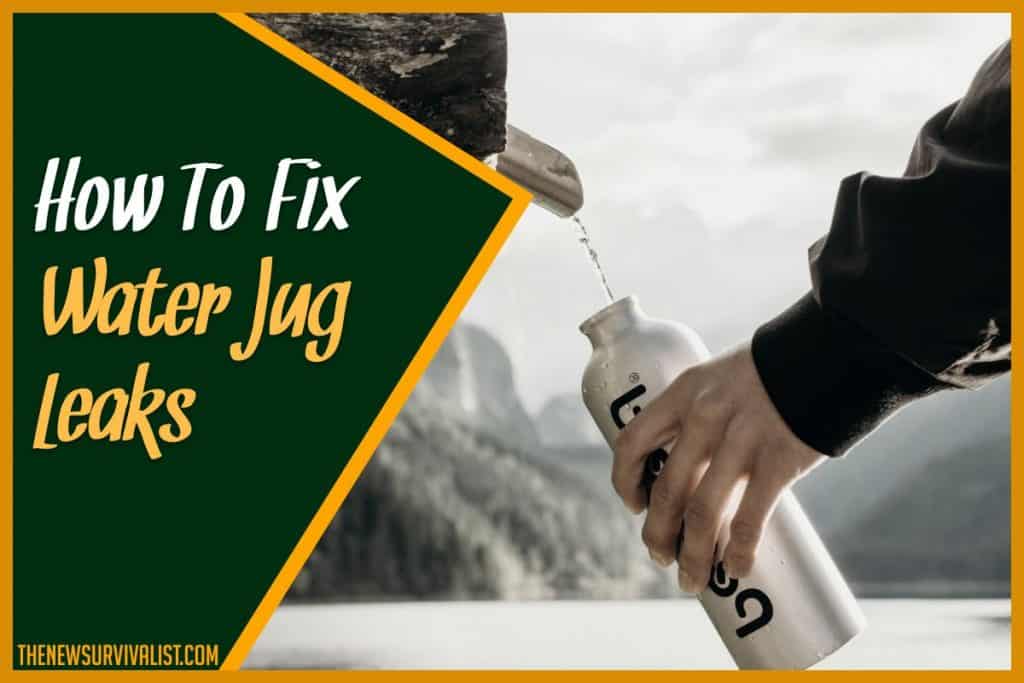A leaking water jug may arise from bottle overuse or accidentally dropping the bottle to the ground, resulting in cracks.
You can fix a leaky water jug by:
- Locating the leak
- Determining the speed of leak
- Fix the leak
Water Jug Leaking? Here’s How to Fix It
1. Locate The Leak
There are numerous causes for a water bottle leak. The cap may be too loose which causes water to spill from the mouth. Another possible cause is the presence of cracks or holes on the bottle itself.
You can locate the leak by filling up the bottle with water and then observing where the water is coming from. Replace the lid and then touch the surface to locate the leak. Make sure to do this in a basin or over a sink to prevent the water from spilling everywhere.
2. Determine The Speed Of Leak
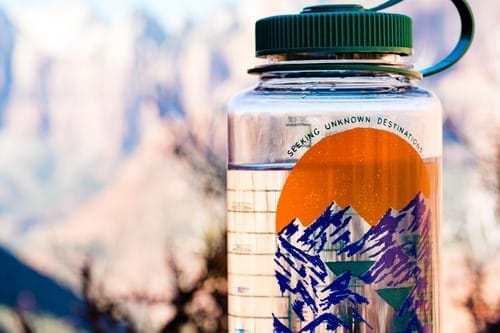
The speed of leakage helps determine the solution for your leaking water bottle. For example, if the bottle empties really quickly, then that means the leak is caused by a crack that may be irreparable. If the bottle empties at a slower rate, then the leak might be caused by a small hole that you can quickly patch up.
Mark the initial water level on the bottle using a marker. Check the bottle after a few minutes to see how much water was lost.
3. Fix The Leak
The sealant depends on the type of leak on the water bottle. You can use a plumber’s thread seal tape, silicone sealant, or waterproof tape.
Plumber’s Thread Seal Tape
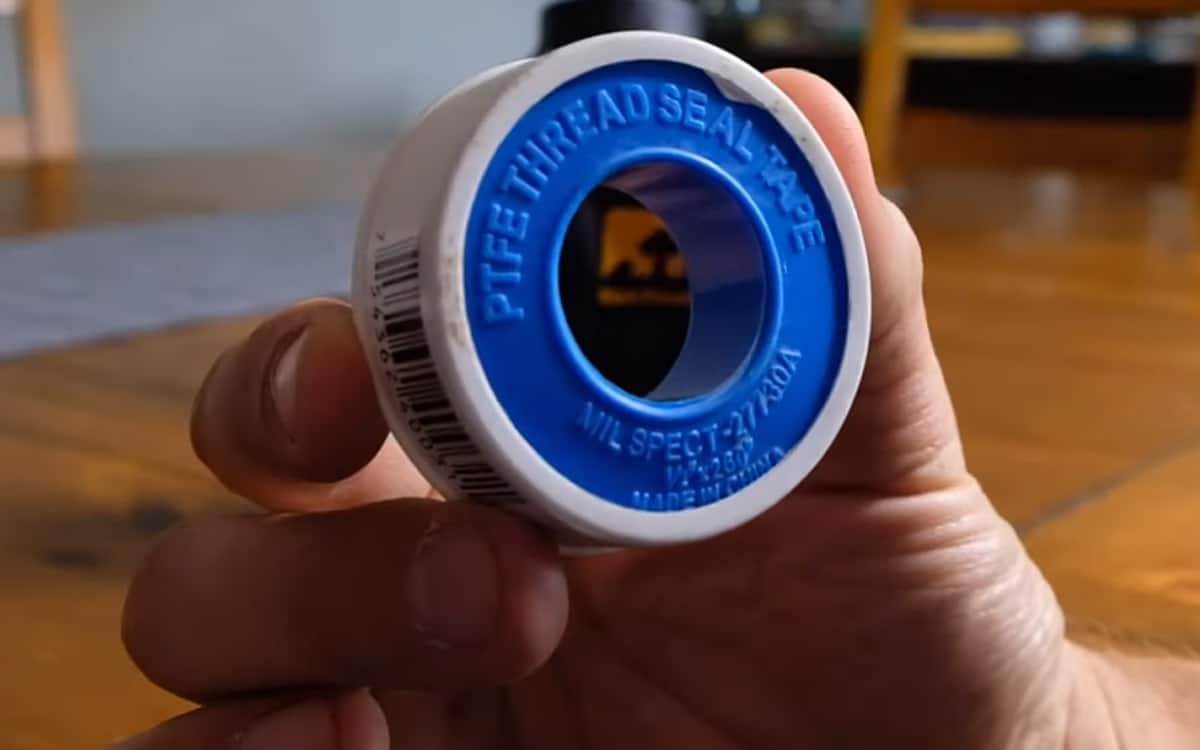
This is an easy fix, perfect for loose bottle caps that cause leakage. This allows you to fix your water bottle in under a minute and for only two dollars! Simply purchase a roll of plumber’s thread seal tape from any hardware store.
Remove the bottle cap and then press on a layer of the tape on the mouth of the bottle. It’s important to roll in a counter-clockwise direction. Add as many layers necessary to retighten the cap. The average number of layers will be three to four layers. Roll the tape slowly to avoid bulging, bunching, or air bubbles. Replace the cap and then you’ll find that your bottle will no longer leak!
For more information on how to do this, check out this video:
Silicone Sealant
![]()
A bottle of waterproof silicone sealant works just like waterproof glue. A bottle will cost around ten dollars or less, depending on the brand. Make sure to purchase a bottle of food-grade and BPA-free silicone sealant. Superglue should be avoided because it is not food-grade. It’s important to pick out a food-grade option since it’ll be making contact with the water you drink.
This works best for patching up holes and may be used as a temporary fix for cracks. Squeeze a generous amount along the crack. Do the same in the inside so that both sides are covered. Read the packaging to know how much time is needed for the sealant to completely cure and dry. Don’t pour any water in the bottle until you are sure that the sealant has completely cured. This may take several hours.
After the specified time frame, test your water bottle for leaks by filling it with water, replacing the lid, and then shaking it. If the bottle is still leaking, then you might need to add another layer of silicone sealant.
Check The Spout Or Spigot
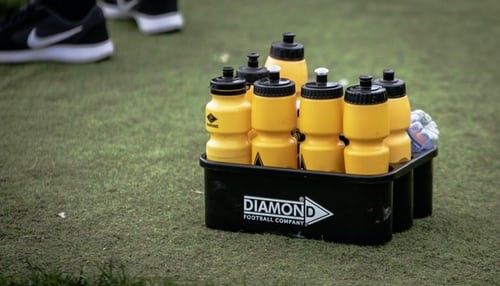
For some bottles, especially Eddy water bottles, the leaks on the spout or spigot may be caused by clogs or blockages. There could be a small pebble or dirt build-up that makes it impossible for you to fully seal your water bottle.
You can simply locate the blockage and then scrape it out using a toothpick or a pin. If that doesn’t work, then you need to disassemble the spout in order to clean it out of any debris. At the worst-case scenario, you can contact the bottle manufacturer and order a brand-new spout to replace your old one.
Waterproof Tape
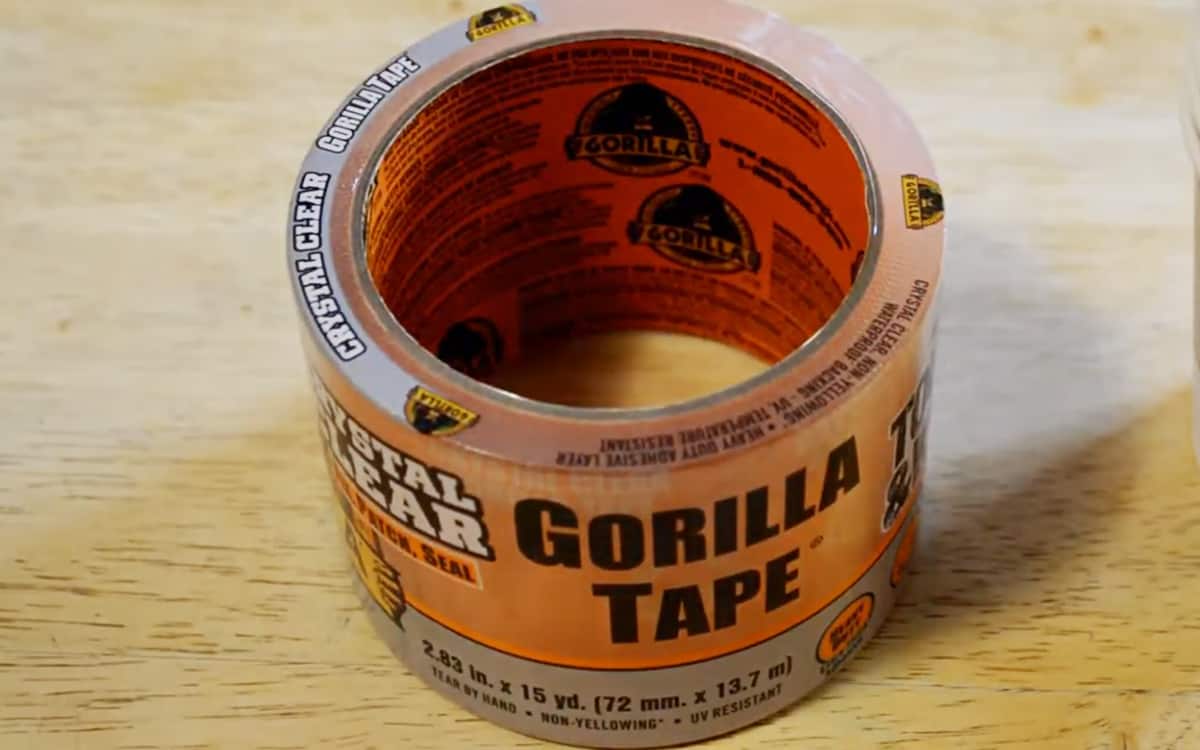
This is similar to a plumber’s tape. It can be a temporary fix for any crack or fissure. Simply place enough waterproof tape over the crack or fissure to stop the leaks. You might need to replace the tape every now and then because its constant exposure to water can cause it to lose its adhesiveness.

